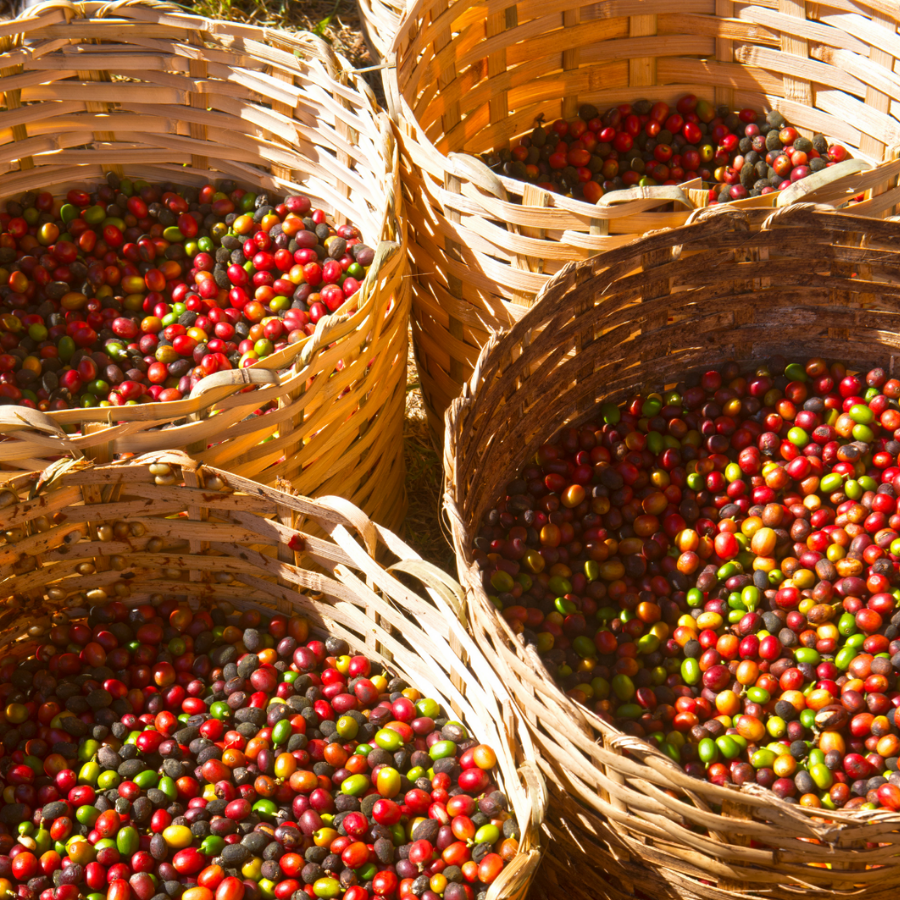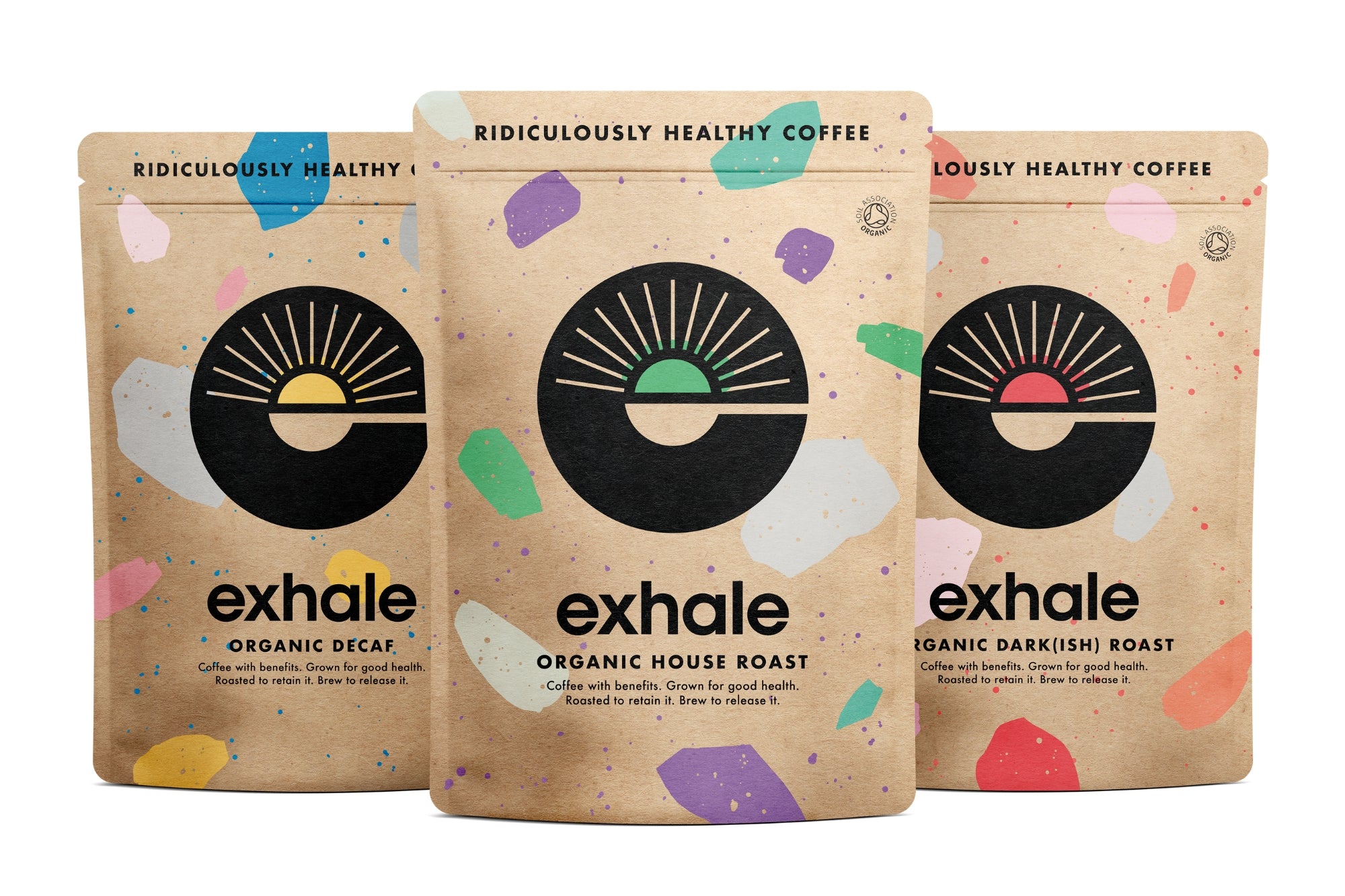We all know the score, eat the rainbow because the most colourful foods - all your fruits and veggies - are the healthiest.
But did you know we can include a cup of coffee in that rainbow too?

Let me take you back to the farm to explain…
Even though we call them ‘beans’, what we know as coffee is actually a seed and comes from a fruit called a Rubiaceae cherry. This cherry grows on Coffea trees (it’s all starting to become clearer now, right?), and there are over 120 different species of them - two of which you’ll probably have heard of, the Arabica and Robusta.
Coffea trees can reach up to 11ft in height and grow beautiful white, pink or red flowers. After about 3-5 years they start to produce their coffee cherries which are bright red and go through just about every colour of the rainbow as they ripen - a process that can take around 9 months.

Don’t get me wrong, they look delicious but they aren’t the type of cherry you want to dip in chocolate or bang in a pie. Once they’ve ripened they get picked and processed which means the fruit is removed and the green coffee beans inside are left to dry out.
Think of it like the pit inside a peach - only we’re more interested in that tasty pit than the flesh of the fruit.
And just like other fruits these coffee beans are packed full of plant-based, naturally healthy compounds like polyphenols, vitamins and antioxidants.
In fact, the polyphenols in coffee are often considered one of its biggest plus points. Sure they’re present in many fruits and veggies, but chlorogenic acid (which is a polyphenol) is mostly found in coffee. Consider it a bit of a wonder phytochemical with antioxidant, hepatoprotective, cardioprotective, anti-inflammatory, neuroprotective, antiviral and antibacterial effects (1).
Not content with health benefits alone, the fact that coffee comes from fruit means it has the potential to take on a huge range of delicious flavours too - depending on the variety, roast and method of brewing.
And as you probably already know, our sourcing and roasting process is serious business. At one point I was in a lab coat more than I was out of one.

This is the stage where those dried out green coffee beans - the seed of the cherry fruit - come back in. Ours are roasted in a process that involves 9 different tests at independent labs across Europe, to be absolutely sure that all those health benefits stay locked in.
Our coffee is also organic and tested to be free from mycotoxins and pesticides, which all contribute to that clean, natural taste.
Now I’m not saying consider coffee one of your five a day (not in part because our legal team won’t love me for it) but I am saying a cup of the good stuff has more in common with its fruity counterparts than you’d think.
So the next time you’re sipping on a brew, know that it’s a great, healthy addition to your diet.
Enjoy!
Al x
References
1. Naveed M, Hejazi V, Abbas M, Kamboh AA, Khan GJ, Shumzaid M, Ahmad F, Babazadeh D, FangFang X, Modarresi-Ghazani F, WenHua L, XiaoHui Z. Chlorogenic acid (CGA): A pharmacological review and call for further research. Biomed Pharmacother. 2018 Jan;97:67-74. doi: 10.1016/j.biopha.2017.10.064. Epub 2017 Nov 6. PMID: 29080460






Leave a comment
All comments are moderated before being published.
This site is protected by hCaptcha and the hCaptcha Privacy Policy and Terms of Service apply.